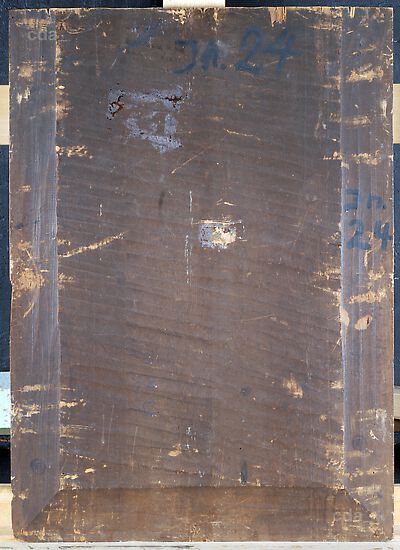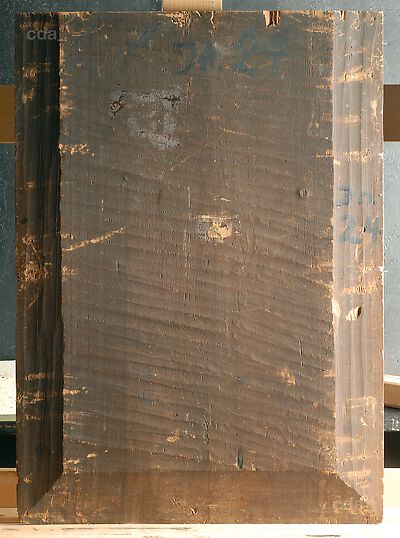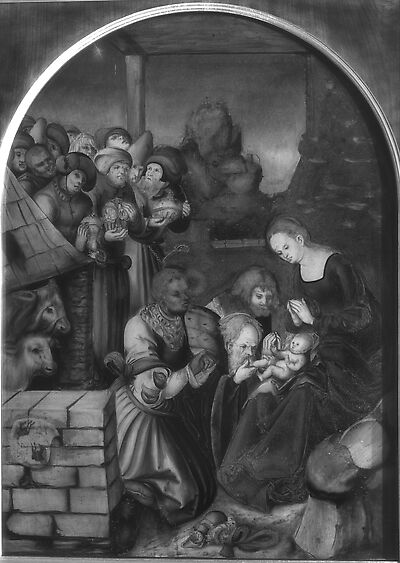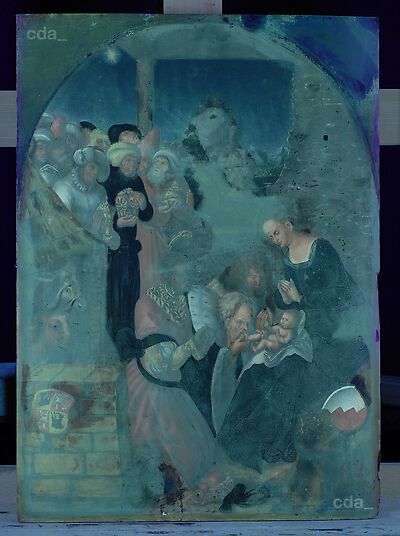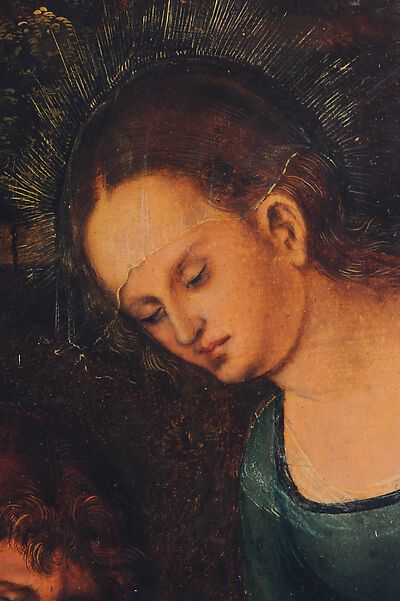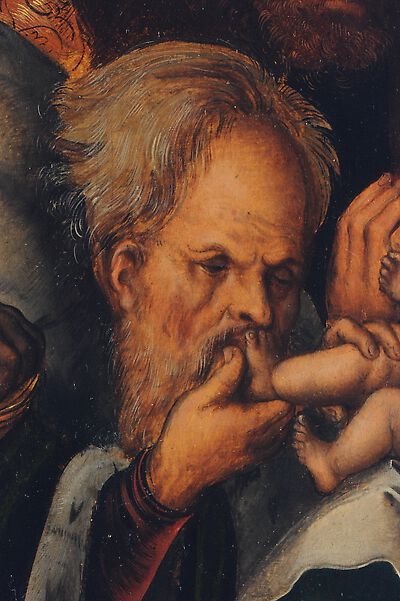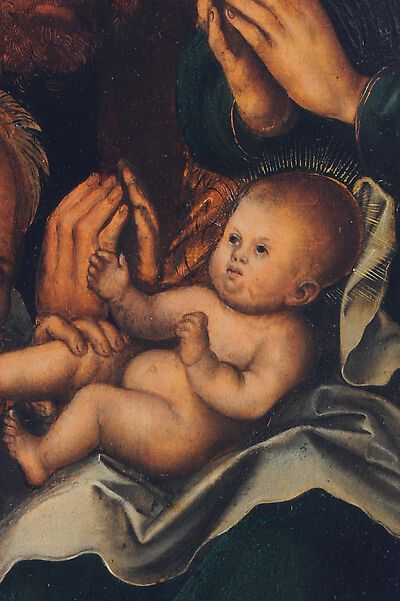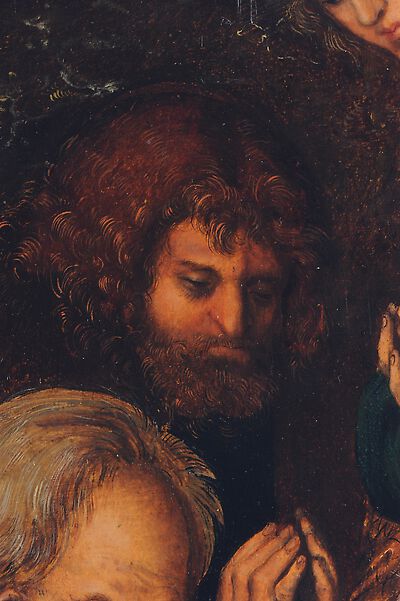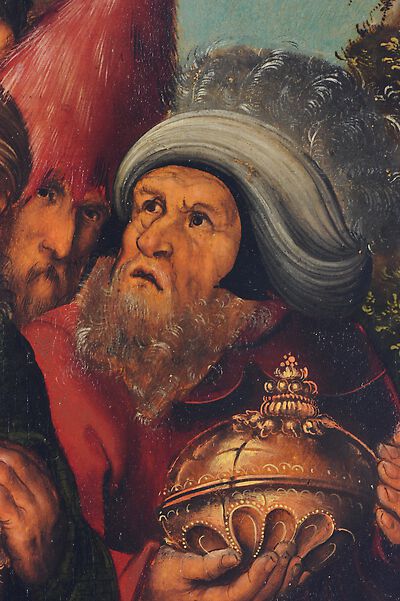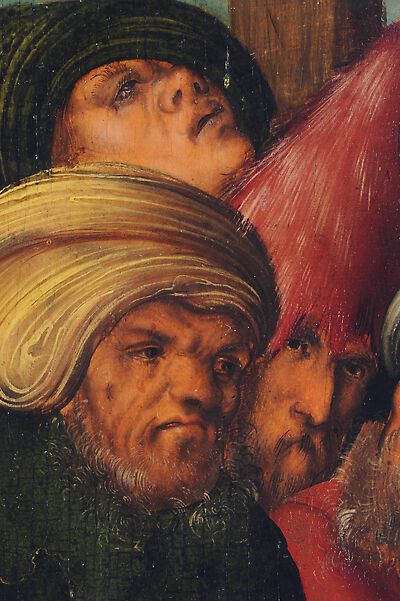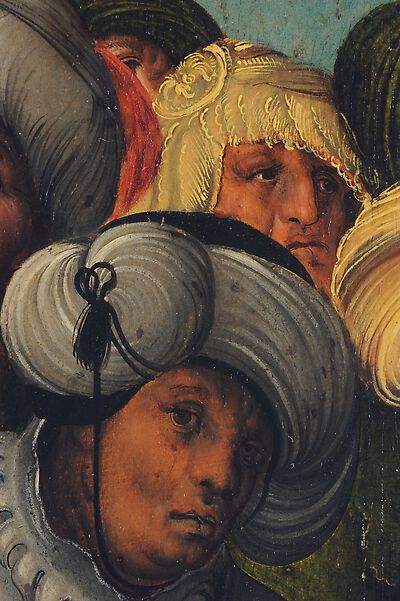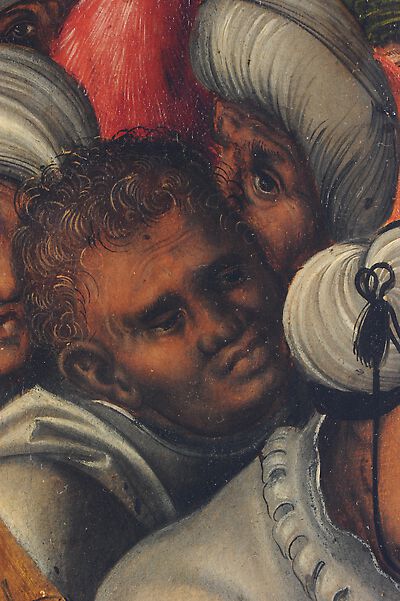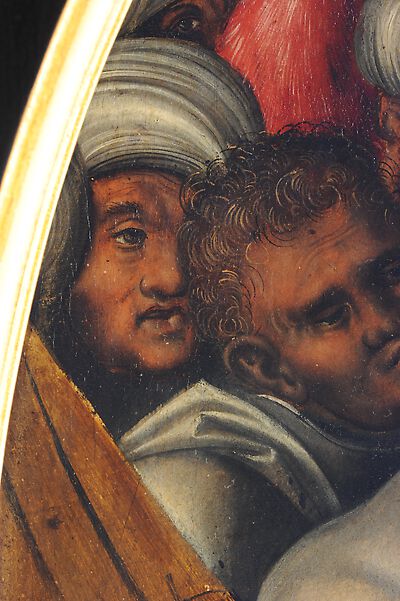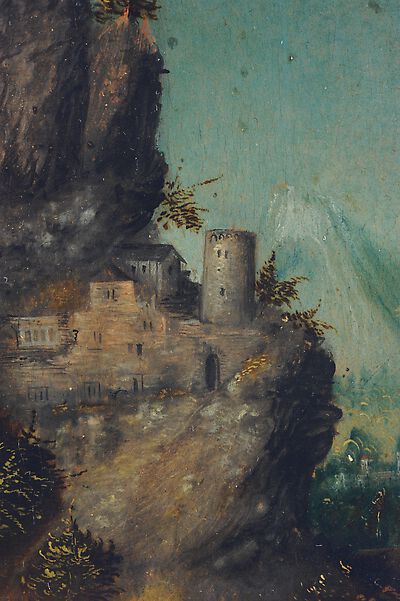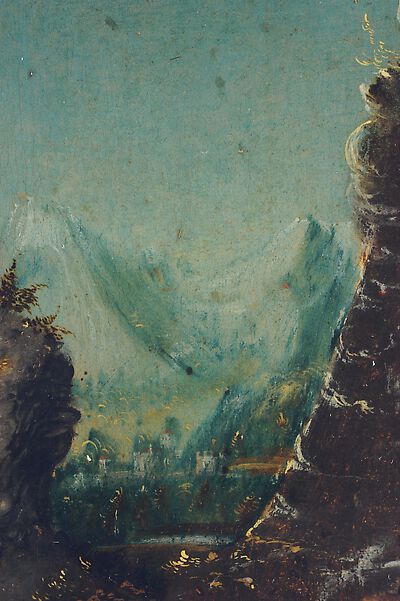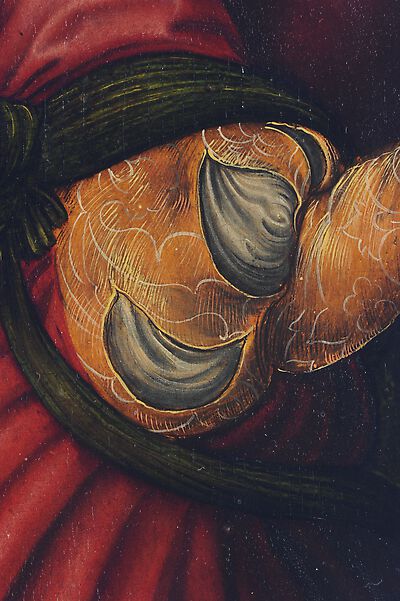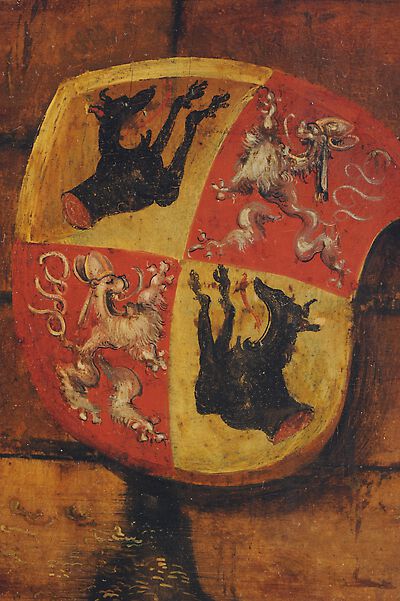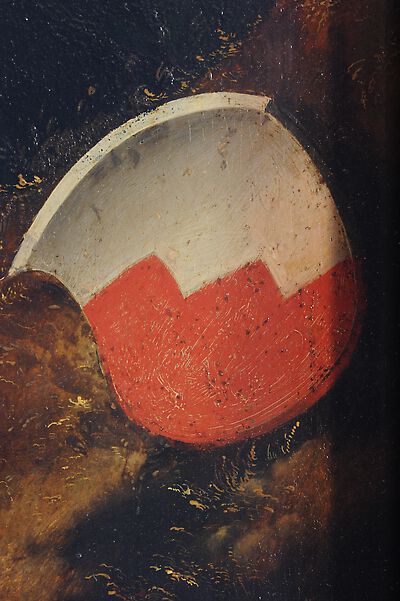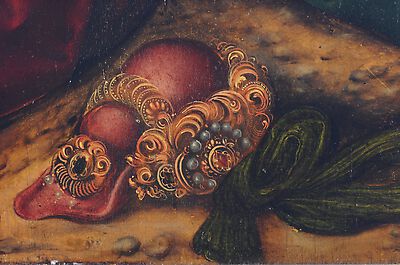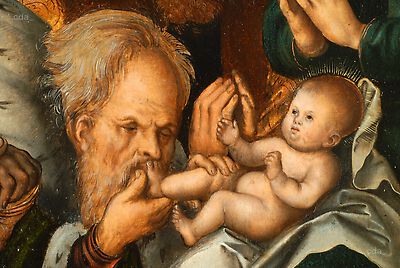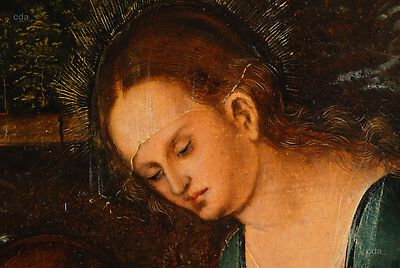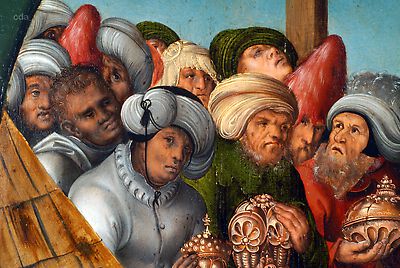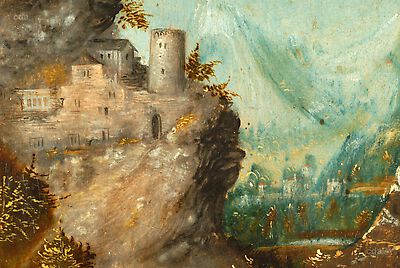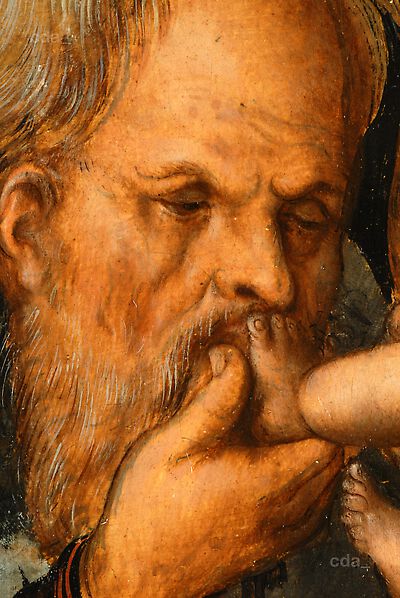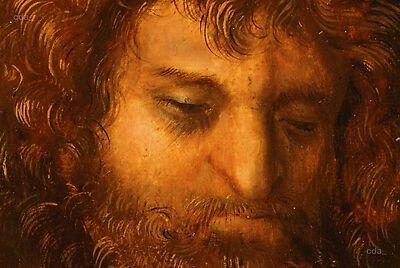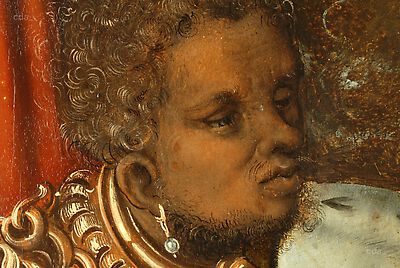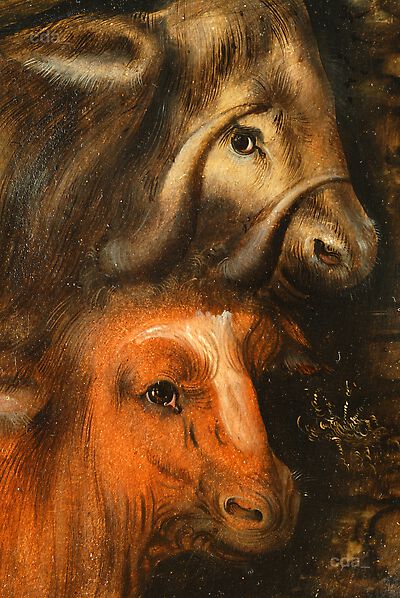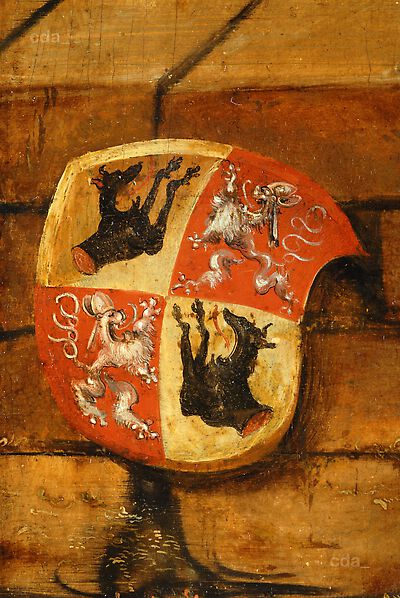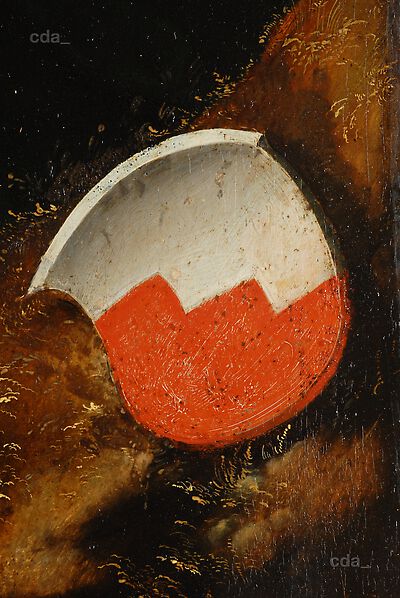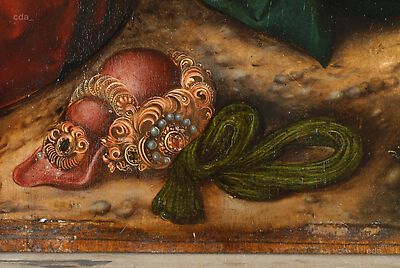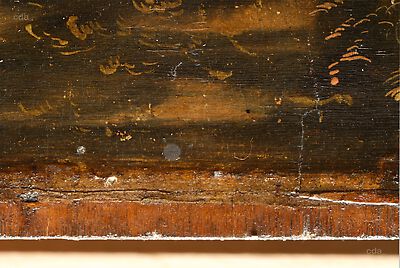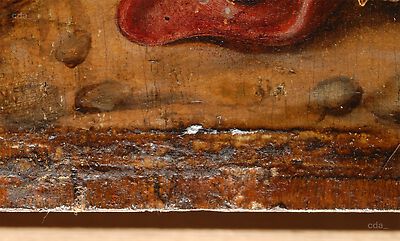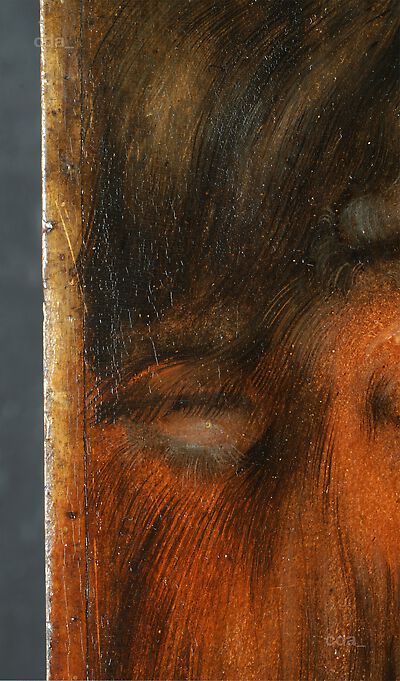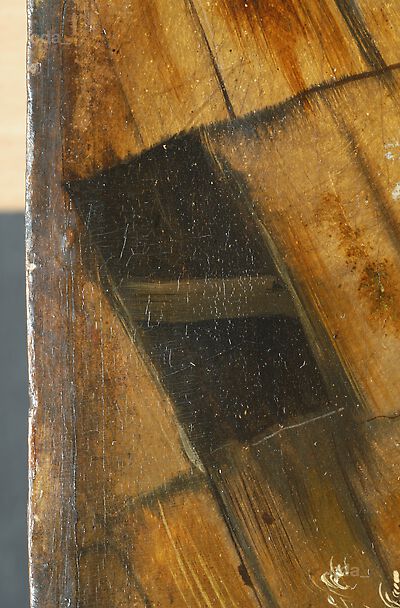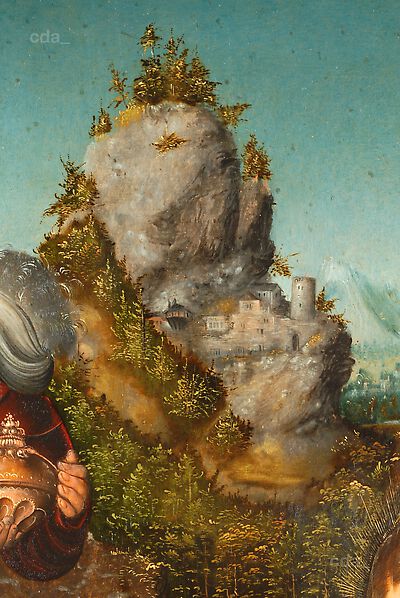Rahmung
- not original, 19th century
- hardwood, verneer
- mortise and tenon join, mitred at the front; the flat surface is verneered and the profile is painted black; the inlay is arched at the top, painted black and the inner edge has a profiled rebate with a matt gilded finish.
[Museum der bildende Künste, revised 2014]
Support
- limewood [1]; no knots, tangential cut
- three vertically aligned boards (23 cm; 11,2 cm; 15,4 cm)
- butt joints
- no contemporary treatment for damage; the joins do not appear to have been reinforced
- horizontal and vertical marks from a block plane visible; there is a 7 cm bevell on three sides, excepting the the top edge where vertical block plane marks are visible (see raking light image of the reverse)
- trimmed along the top edge (later)
[1] See Klein Report 2013
Ground and Imprimatura
- thin, white ground layer, probably glue-chalk (not tested)
- the panel appears to have been fixed in a temporary work-frame (or temporary battens were attached at the top and bottom) during the application of ground and paint layers. Along the vertical edges the ground extends to the edge of the panel. Here occasional small bulges of ground have been preserved, in part they go beyond the edge. The upper edge of the panel has been trimmed by c. 7 cm. A barbe is only visible along the bottom edge where c. 4-5mm of wood was left exposed.
- bottom edge: marks on the bare wood (probably marks for the saw). along both outer edges and the semi-circle: incisions in the ground to fix the size of the image.
- no marks from tools; no imprimatur
Underdrawing
- freehand drawing with a quill
- visible with the naked eye in the areas of the flesh paint and partially in the landscape
- in the background lines for the stable roof and the posts were drawn with a ruler
- small alterations are visible in the heads of the group in the background on the right, in the legs of Christ; otherwise the painted version is more or less identical
- there is no indication that any mechanical method to transfer the design was employed
Paint Layers and Gilding
Order of paint layers:
- greyish-blue underpaint beneath the blue paint layer of the sky; the application for the semi-circular arch (monochrome) is achieved employing blue paint over a dark grey layer (opaque)
Sequence:
-The composition was sketched on the white ground with greyish-brown paint of varying transparency. The flesh paint was held in reserve. The subsequent painting adhered strictly to the design of the underdrawing. It often clips zones like the robe, the sky and the heads of figures with sharp edges. The flesh paint is a simple layer structure: economical undermodelling of shadows and forms are essentially described by contours, that alternate between hard and soft ; economic use of highlights. The architcture and the foreground are painted wet-in-wet employing various brown tones. These are semi-transparent allowing the brushstrokes from the underpaint to show through. Highlights and contours are also applied to the wet brown paint, and in part blurred. The coloured robes were painted wet-in-wet, with a monochrome underpaint, the are shadows darker and finished with glazes. Contours, hightlights and grass are in part applied with an impasto technique with a pointed brush (probably tempera).
Paint application:
- brushstrokes, in part dabbed, glazed, highlights and contours impasto application
Brush width:
- pointed and small flat brushes
Paint application beyond the edge of the ground layer:
- top: rounded arch clipped by a black line. Azurite (only examined under the stereomicroscope) was probably employed in the admixture to paint the neighbouring monochrome zone (in places overpainted). The paint layers extend to the edge of the panel on the left and right sides, see image.
- there are no fingerprints, alterations or gilding


